Around 80% of women experience menstrual cramps at some stage in their lifetime, which can cause them to miss work or school due to the severity of the pain.
Earlier this year, Spain passed a law to allow employees with debilitating period pain to take paid ‘menstrual leave’, and there are calls for a similar law to be approved in the UK.
Having suffered with period pain, known medically as dysmenorrhoea, 22-year-old Lauren Shortel, a final year Product Design student at Brunel University London, was inspired to create AllWhale.
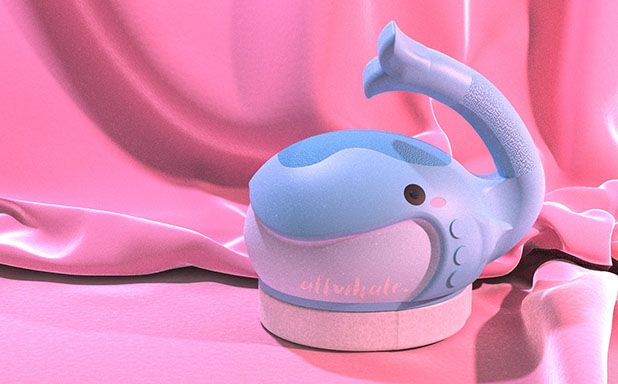
The product looks more like a child’s toy than a medical treatment, but it is designed to offer an alternative method of managing period pain without the need to regularly purchase medication or remedies.
As we all look to become more sustainable, there is an argument that medical treatments should move away from pharmaceuticals, aspeople are keen for more technology-based solutions rather than pills.
AllWhale has a dual treatment approach with a standard heating element and shockwave therapy technology. It is designed to be used when stationary, while lying in bed or when sitting at home or at work.
The bottom of the whale is cushioned and generates heat, while the tail end is a flexible shockwave applicator.
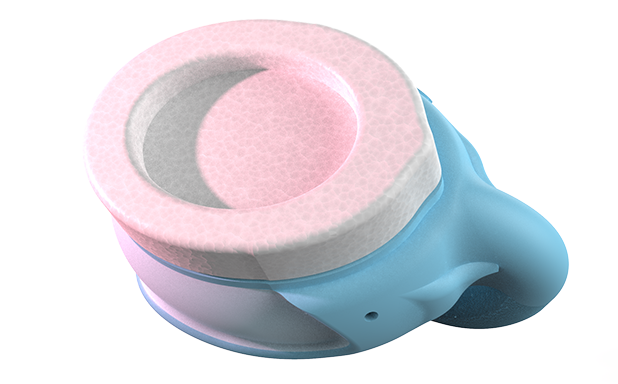
Cushioned bottom for heat sensation
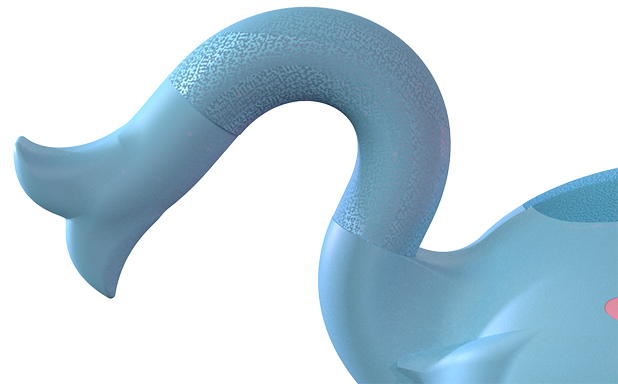
Flexible shockwave applicator
When Lauren initially began her product design, she focused on the technology first, rather than the appearance.
“The shape and geometry of a whale allowed itself to be adapted to the technology well, and that’s the main reason why it has taken this form. It was technology first and then the animal,” said Lauren.
The tail applicator applies a treatment called extracorporeal shockwave therapy, which was originally used to treat swelling and pain in the tendons, and was originally only available in medical settings. Now, the technology is available for people to administer themselves at home.
Studies have proven that the pressure created as a result of the technology stimulates blood flow, reopening compressed blood vessels.
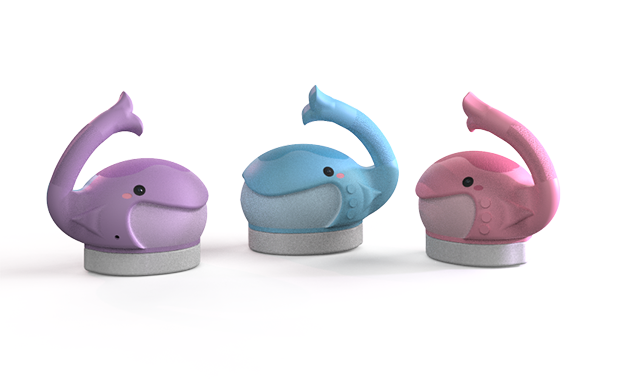
The heat and shockwave functions can be used together or in isolation. “If you just want the heat, you put the whole whale on your abdomen to get the heat sensation, but if you just want the shockwave, you turn it around and place the tail on your abdomen. The tail end is a powerful device for smaller areas,” explained Lauren.
‘AllWhale’ is a play on the words ‘all well’ and Lauren purposefully wanted it to look non-medical.
“Standard painkillers and medical apparatuses all have a very specific look to them,” she said. “I don't think it's right to conform to the idea that medical products have to be white and sterile, and have sharp edges. It's not necessary for the product to function.
“A lot of research has suggested that their form and appearance are feeding into medical mistrust and leading to disengagement.
“You could argue that if you redesign the form of something that could, for example, combat menstrual cramps, then people might engage with them, because of their specific appearance.”
Lauren explained how the whale can also help users bond with the product through what is called emotionally durable design. “Giving a product a character or making it look like something that's alive and has a personality can help increase the efficacy of the product,” she said.
“Along with the technology doing the work, appearance can also elicit a response. The connotations of whales are that they are calming and soothing, and there's an argument that says that the appearance of something can stimulate a certain response from the user.”
AllWhale was unveiled at last week’s annual Made in Brunel exhibition, which showcased gadgets and devices designed by final-year students from Brunel Design School.
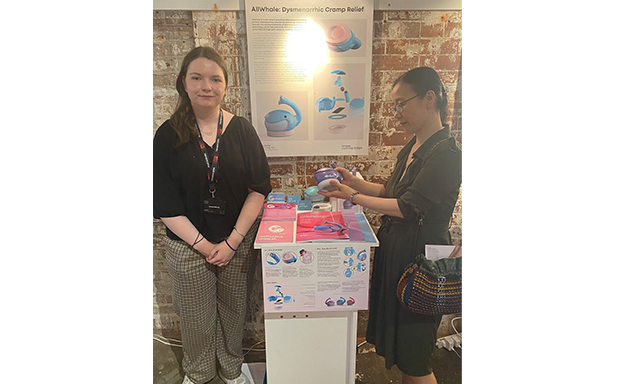
Lauren Shortel & Prof Hua Dong, Head of Brunel Design School, at the Made in Brunel exhibition
The event was held at the Bargehouse, Oxo Tower Wharf, London, and was an opportunity for the students to promote their skills, products, and ideas to industry professionals and the wider creative community.
For further information on Product Design at Brunel, please visit http://www.brunel.ac.uk/bsc-pdes
Reported by:
Nadine Palmer,
Media Relations
+44 (0)1895 267090
nadine.palmer@brunel.ac.uk